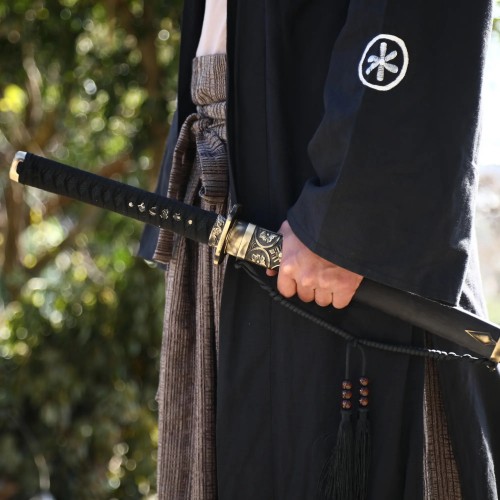Unlocking the Mystique: The Truth About Real Katana Swords
For centuries, the katana has captivated the imaginations of people around the world. The legendary Japanese sword is often associated with the samurai, embodying a sense of honor, skill, and power. Yet, behind the mystique and allure lies a deeper understanding of the katana's true nature. In this blog post, we will explore the fascinating truth about real katana swords.
First and foremost, it's important to recognize that the katana is not merely a weapon; it is a work of art. Craftsmen known as swordsmiths devote their lives to mastering the intricate process of creating these exquisite blades. The forging of a katana involves a meticulous combination of metallurgy, heat treatment, and careful shaping. The result is a blade with a unique curvature, a razor-sharp edge, and a remarkable resilience.
Contrary to popular belief, not all katana swords are ancient relics from feudal Japan. While authentic antique katanas do exist, they are extremely rare and often come with a hefty price tag. Many enthusiasts and collectors today turn to modern swordsmiths who continue the tradition of crafting high-quality katana swords. These contemporary swords, known as "shinken," honor the techniques and craftsmanship of the past while incorporating modern materials and methods.
One of the distinctive features of the katana is its curved blade. This curvature, known as "sori," serves multiple purposes. It allows for a more effective slicing motion, reducing the chances of the blade getting stuck in an opponent's body. Additionally, the curvature enables a stronger and more stable blade structure. The unique shape of the katana contributes to its reputation as a formidable cutting weapon.
Another characteristic that sets the katana apart is its differential hardening process, known as "hamon." The hamon creates a visible line, often referred to as the temper line, along the edge of the blade. This line is the result of the varying hardness of the steel achieved through the careful manipulation of heat during the forging process. Not only does the hamon enhance the aesthetic appeal of the katana, but it also serves as an indicator of the blade's quality and craftsmanship.
It is worth noting that the katana's mystique extends beyond its physical attributes. The sword embodies a code of conduct and a way of life, deeply rooted in the samurai tradition. The samurai regarded their swords as extensions of themselves, treating them with the utmost respect and reverence. The katana represented more than just a weapon; it symbolized honor, loyalty, and the pursuit of perfection.
While the katana holds a revered place in history and popular culture, it's important to remember that it is a weapon and should be treated with caution and respect. Owning a real katana sword comes with responsibility. It is crucial to understand the laws and regulations surrounding the possession and use of such weapons, as well as to handle them safely and responsibly.
In conclusion, the katana sword is more than a mere weapon; it is a masterpiece of craftsmanship, a symbol of tradition, and a testament to the warrior spirit. Whether ancient or modern, a real katana sword carries with it the legacy of the samurai and the artistry of the swordsmiths. Unlocking the mystique of the katana reveals a deeper appreciation for its beauty, functionality, and historical significance.
